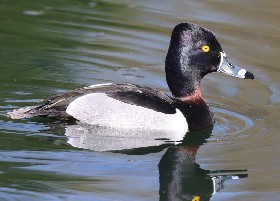Scaup (Greater Scaup/Bluebill) Aythya marila
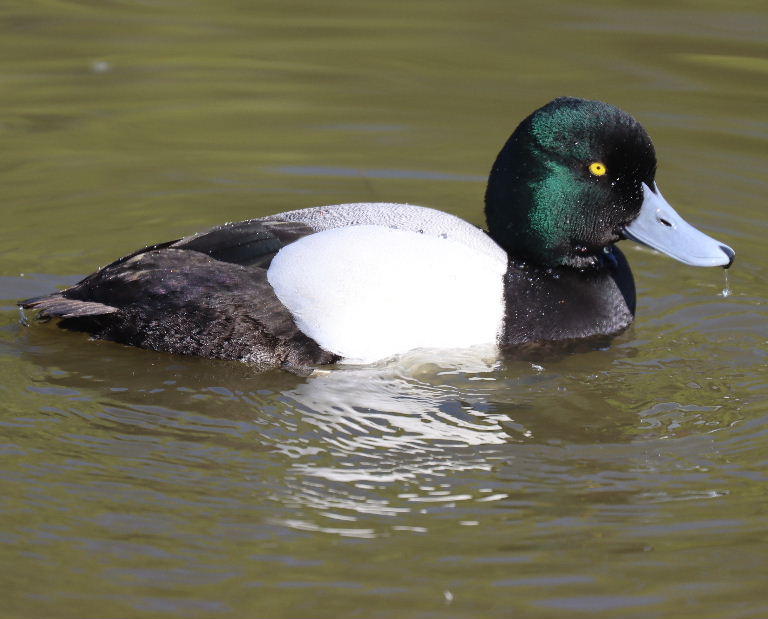
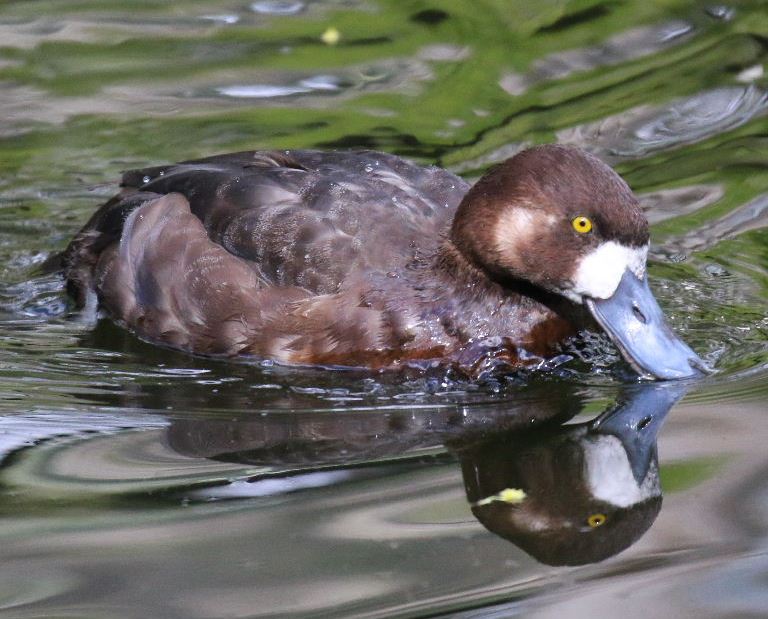
Known as the Scaup in Europe (Greater Scaup or Bluebill in North America),
it breeds in sub-Arctic/Tundra in north Eurasia/North America and winters further south including UK.


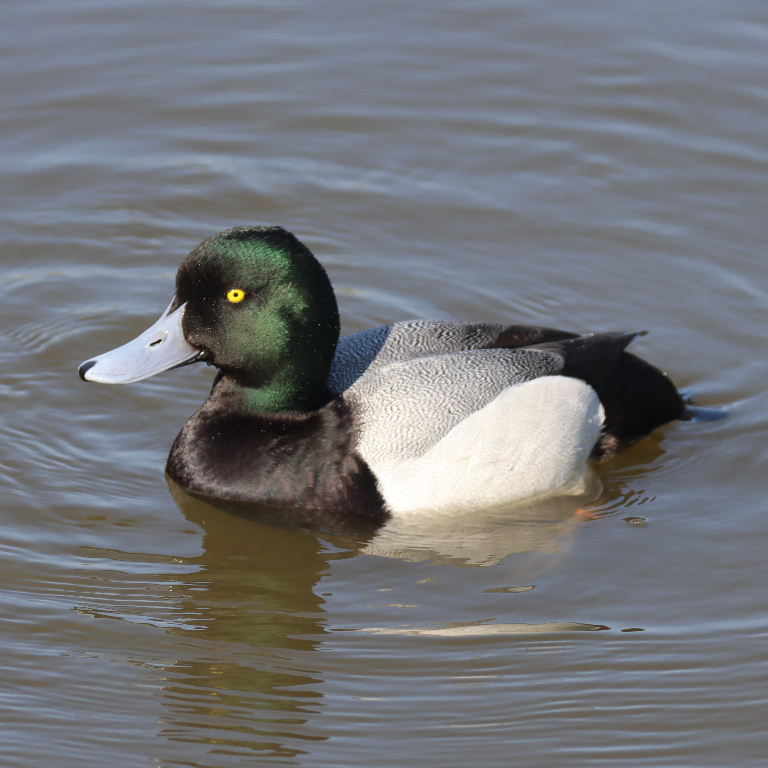
It can be found on fresh water or marine coastal water. The male in breeding plumage (above) has a green-black head.
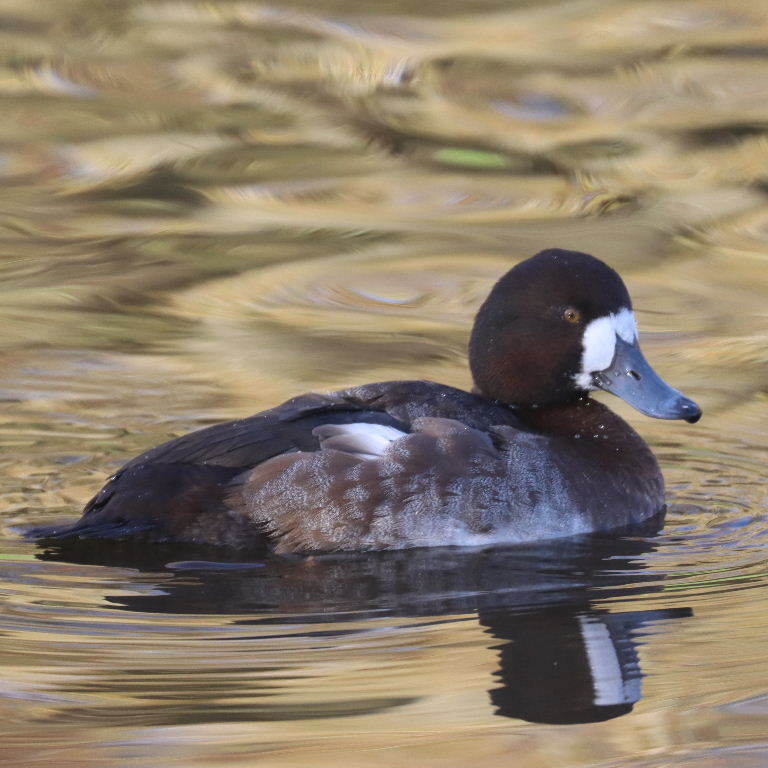

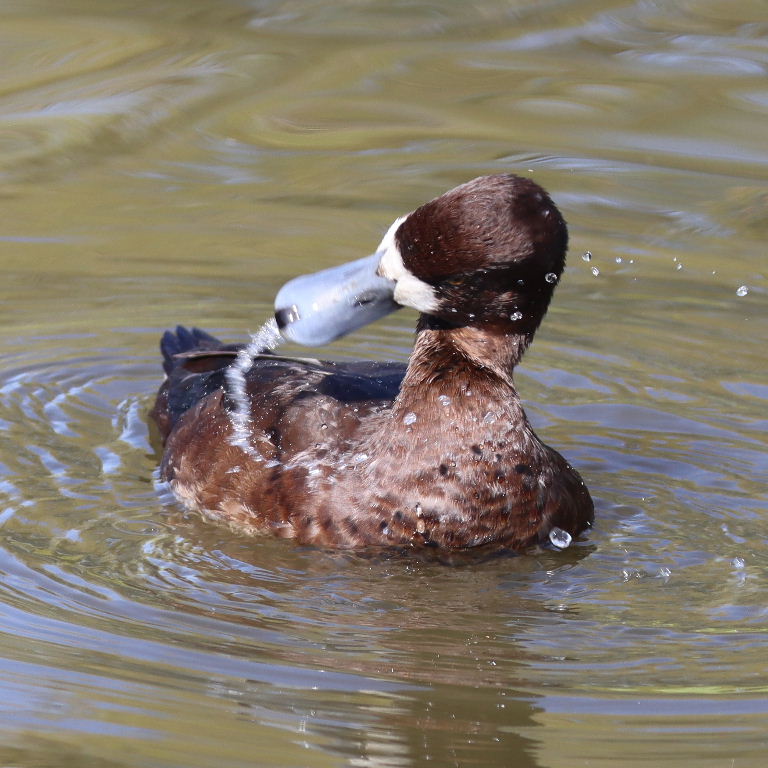
The female Scaup is brown with grey lines and with a large patch of white around the base of her bill.
She has yellow or amber eyes and sometimes has a whitish "ear" patch.

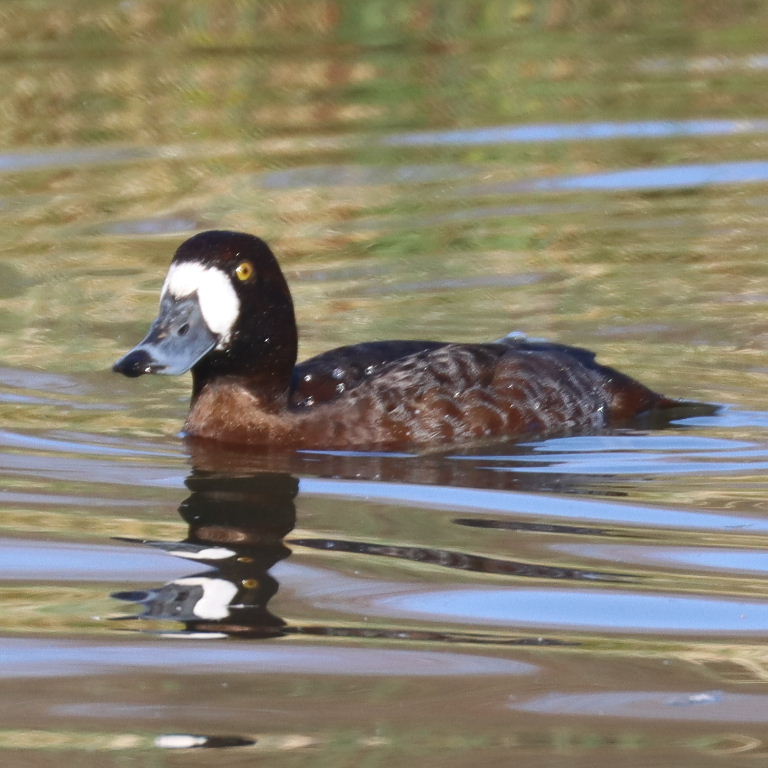
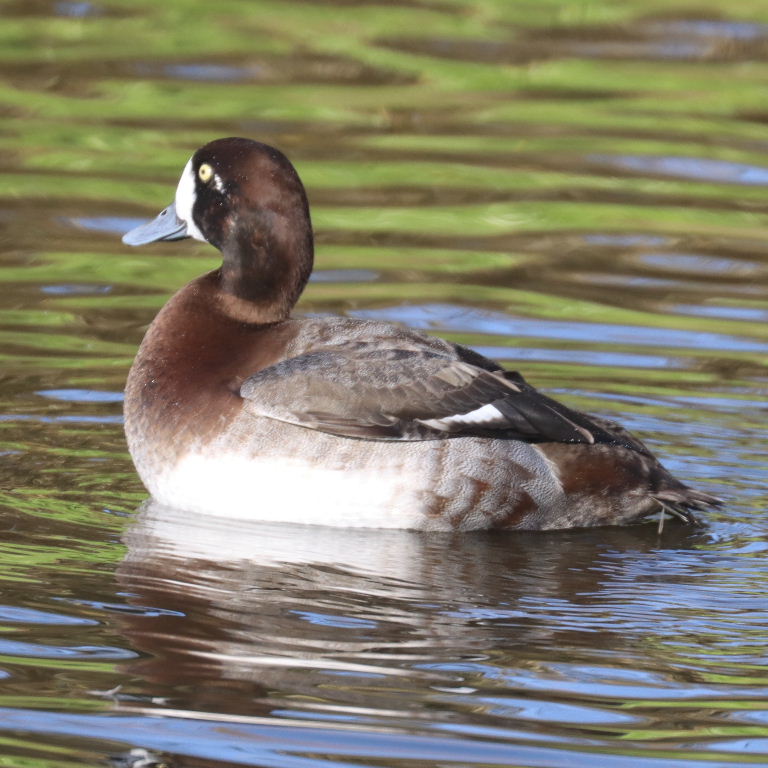
Female Tufted ducks can be confused with female Scaup since the former sometimes have lesser white patches around the base of the bill,
especially in breeding plumage and also have yellow eyes. The female Scaup has more grey on back and sides than the Tufted Duck.



The male Scaup in eclipse (non-breeding) plumage has a darker head and breast than the female
and retains more grey and a vermiculated pattern on his back and sides.

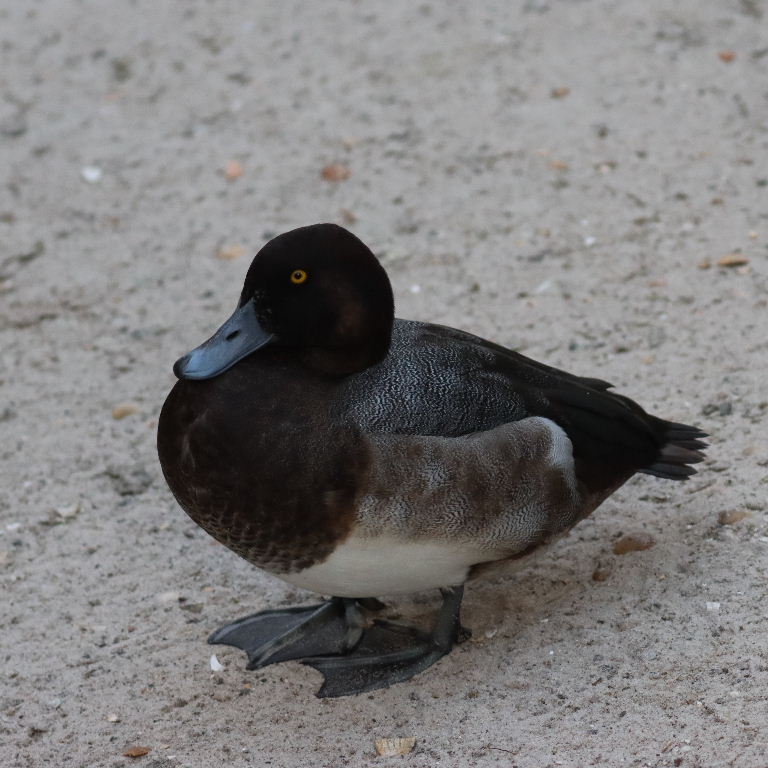
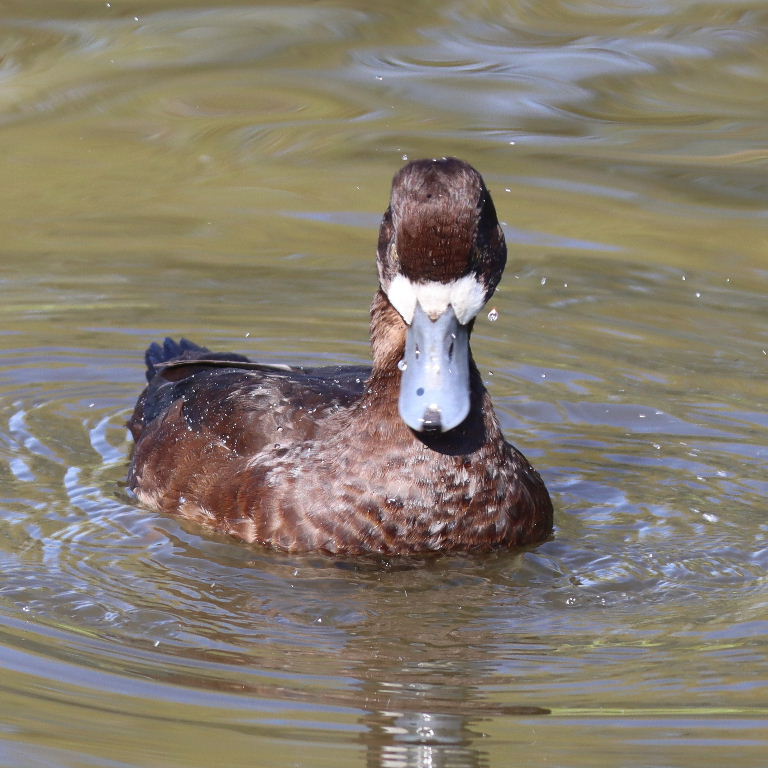
Lesser Scaup (Little Bluebill) Aythya affinis


The Lesser Scaup is native to North America where it is also known as the Little Bluebill. It winters in Central America.
It is slightly smaller than the Greater Scaup, but has a totally different head shape: the Greater Scaup head has a rising forehead and
rounded top/back whereas the Lesser Scaup has a back-sloping forehead with a bump/corner between top and back, similar to the
Tufted Duck (but no tuft). It also often has a purple sheen to its black head rather than green (but that depends a little on the light)
and has more grey on its white flanks in breeding plumage. In flight, the Greater Scaup has a white trailing edge to the whole wing whereas
the Lesser Scaup has a white edge only halfway.
 Above suspected to be male Lesser Scaup in transition to breeding plumage but could be a hybrid.
Above suspected to be male Lesser Scaup in transition to breeding plumage but could be a hybrid.
 The female Lesser Scaup has white at the base of her bill and a head shape more like the Tufted than the Greater Scaup.
She has more grey in her back and sides than either the Greater Scaup or the Tufted Duck. She has amber rather than bright yellow eyes.
The female Lesser Scaup has white at the base of her bill and a head shape more like the Tufted than the Greater Scaup.
She has more grey in her back and sides than either the Greater Scaup or the Tufted Duck. She has amber rather than bright yellow eyes.




